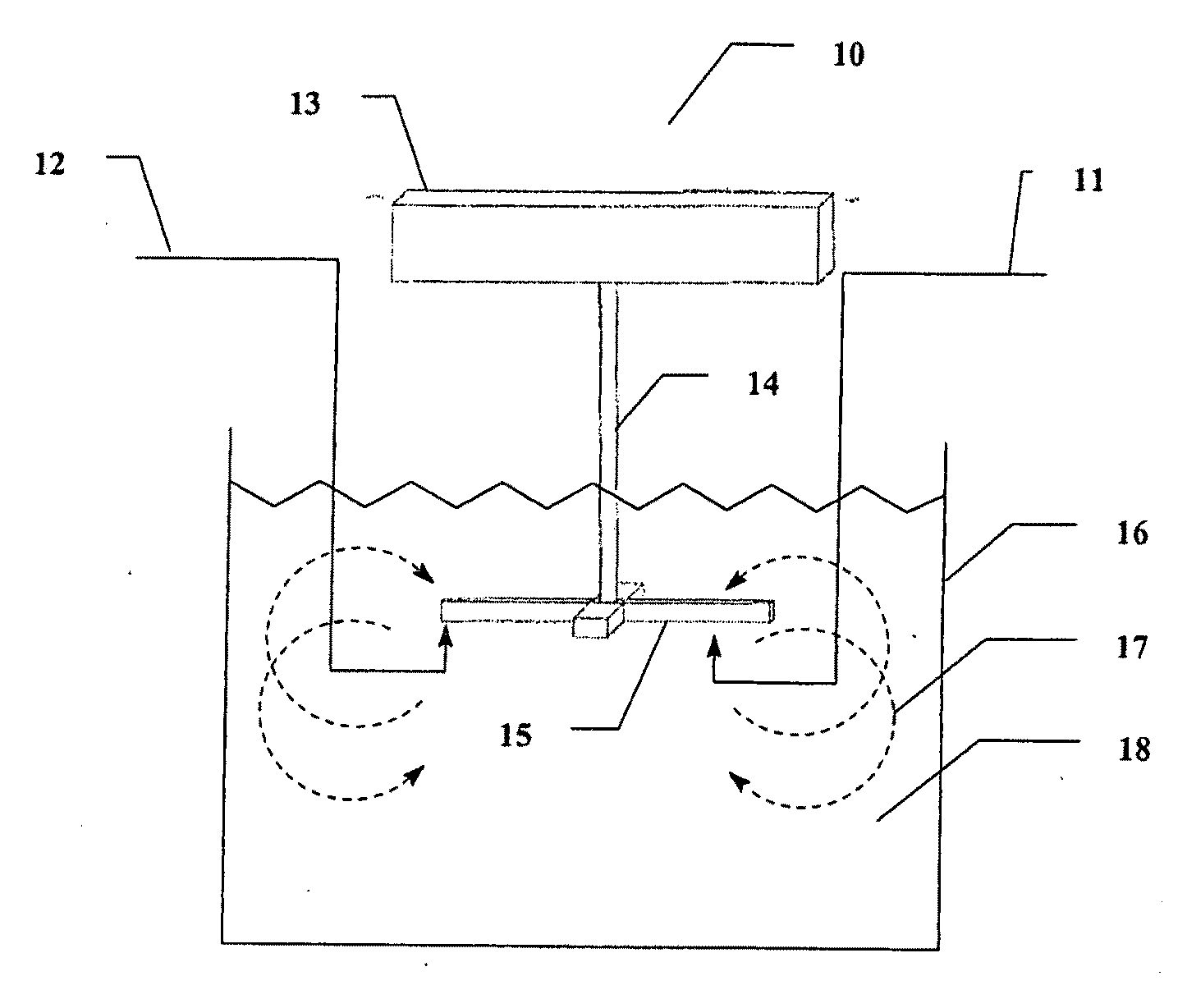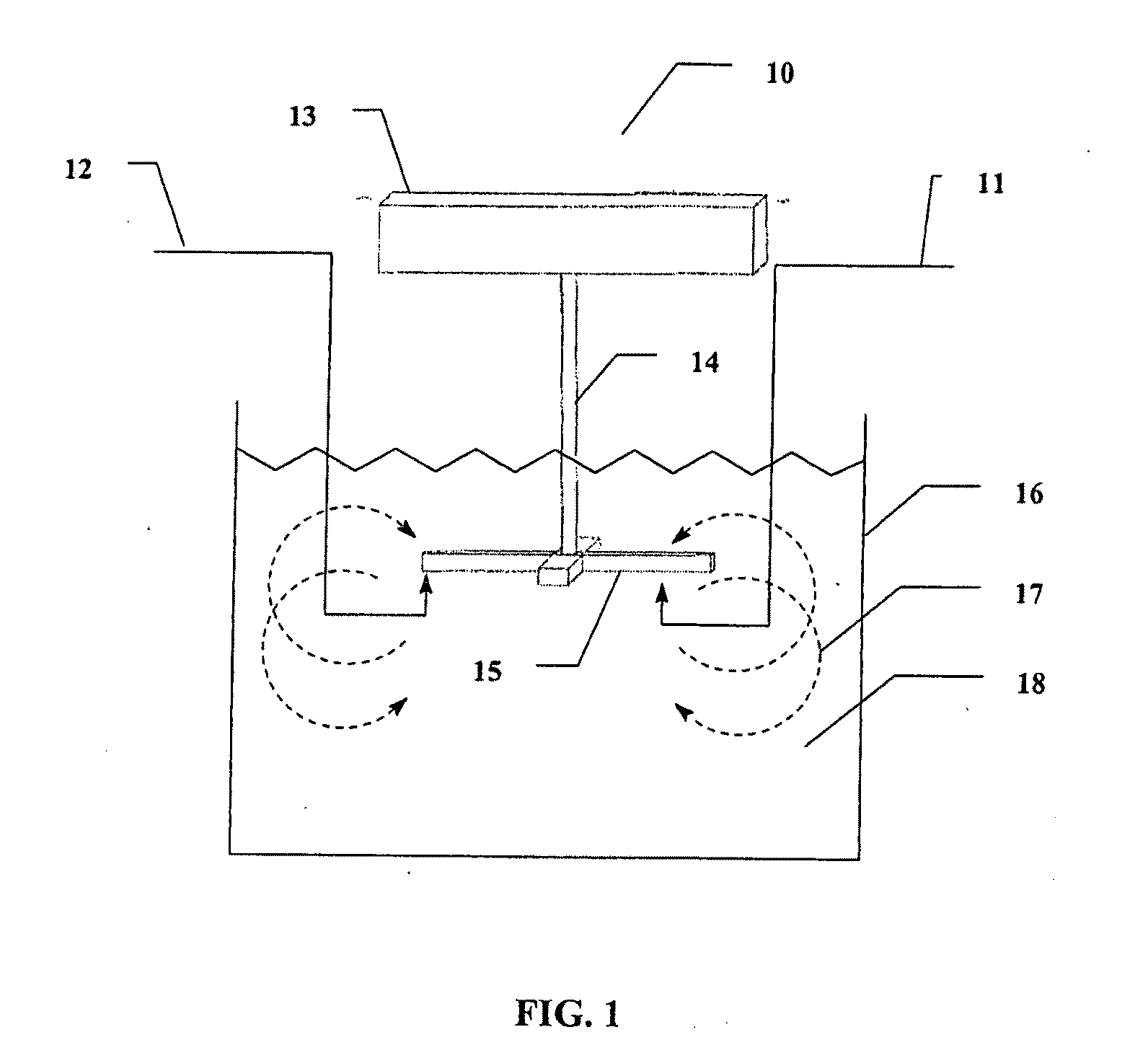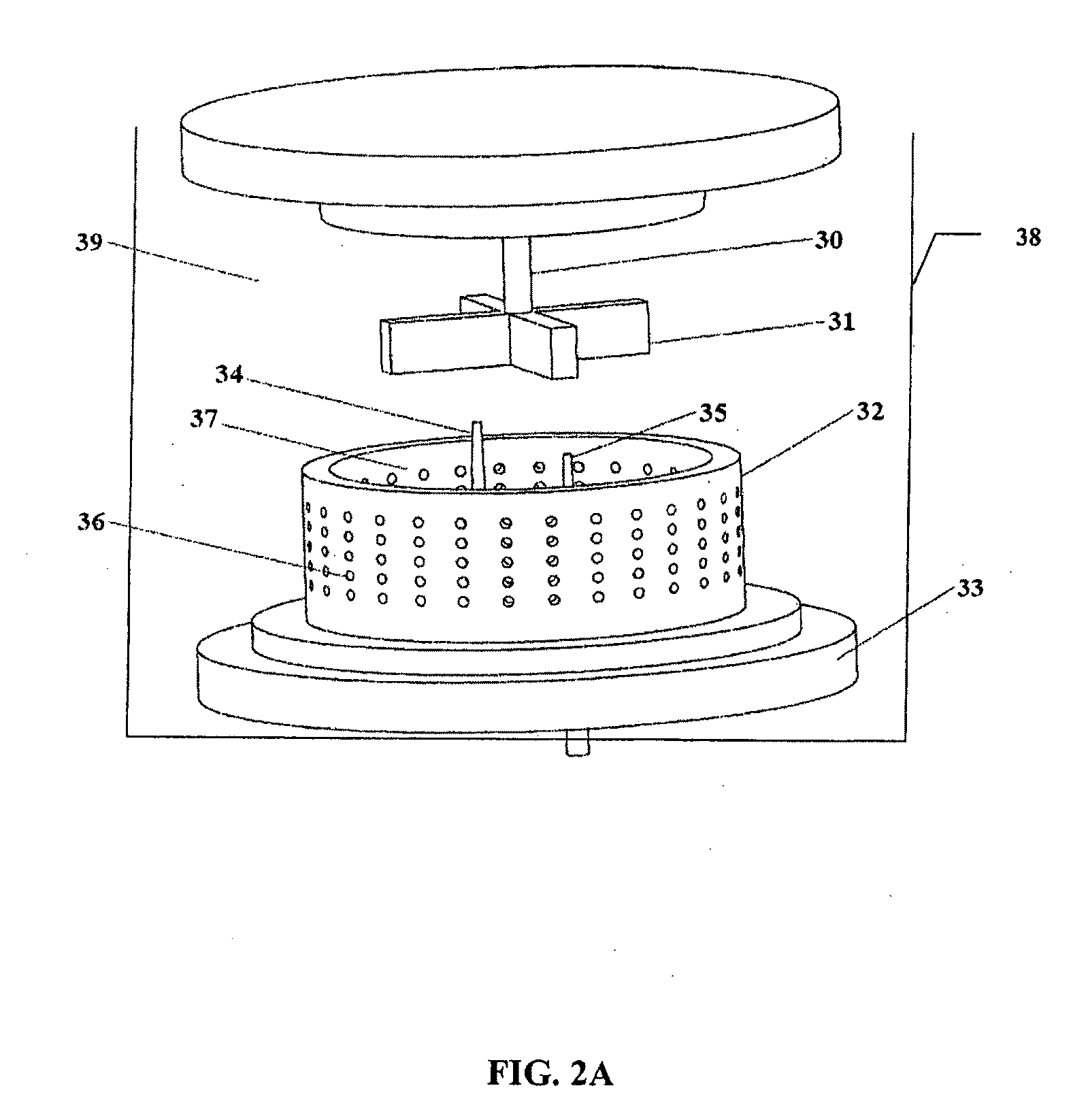Cerium dioxide nanoparticle-containing fuel additive
a fuel additive and nanoparticle technology, applied in the field of fuel additive reversemicellar compositions, can solve the problems of increasing engine wear, diesel engines often develop carbon deposits on the walls of their cylinders, and incomplete combustion and exhaust smoke, and achieve the effect of improving engine power during fuel combustion
- Summary
- Abstract
- Description
- Claims
- Application Information
AI Technical Summary
Benefits of technology
Problems solved by technology
Method used
Image
Examples
example 1
Preparation of Cerium Dioxide Nanoparticles: Single Jet Addition
[0236]To a 3 liter round bottom stainless steel reactor vessel was added 1.267 liters of distilled water, followed by 100 ml of Ce(NO3)3.6H2O solution (600 gm / liter Ce(NO3)3.6H2O). The solution was clear and has a pH of 4.2 at 20° C. Subsequently, 30.5 gm of 2-[2-(2-methoxyethoxy)ethoxy]acetic acid (MEEA) was added to the reactor vessel. The solution remained clear, and the pH was 2.8 at 20° C. A high sheer mixer was lowered into the reactor vessel, and the mixer head was positioned slightly above the bottom of the reactor vessel. The mixer was a colloid mill manufactured by Silverson Machines, Inc., modified to enable reactants to be introduced directly into the mixer blades by way of a peristaltic tubing pump. The mixer was set to 5,000 rpm, and 8.0 gm of 30% H2O2 was added to the reactor vessel. Then 16 ml of 28%-30% NH4OH, diluted to 40 ml, was pumped into the reactor vessel by way of the mixer head in about 12 seco...
examples 1a-f
Evaluation of Alternative Stabilizers to MEEA
[0241]Example 1 was repeated, except that in Example 1a an equivalent molar amount of succinic acid was substituted for the MEEA stabilizer. A brown precipitate that readily settled was obtained, which is an indication of very large particles (several tens of microns), The same experiment was repeated each time substituting an alternative stabilizer (malonic acid—Example 1b, glycerol—Example 1c, ethyl acetoacetate—Example 1d). In each case, a readily settling brown precipitate was obtained, indicating the failure to obtain nanoparticles. For Example 1e, lactic acid at twice the molar concentration was substituted for the MEEA stabilizer. Quasi-inelastic dynamic light scattering measurements revealed a mean hydrodynamic diameter particle size of 5.4 nm when the hydroxide was doubled, and 5.7 nm when the hydroxide was increased by 75%. Mixtures of EDTA (which by itself produces no particles) and lactic acid at a ratio of about 20% / 80% also ...
example 2
CeO2 Precipitation with EDTA / Lactic Acid Stabilizer—Effect of Mixing
[0242]To a 3 liter round bottom stainless steel reactor vessel was added 76.44 gm EDTA disodium salt in distilled water to a total weight of 1000 gm, 74.04 gm of DL-lactic Acid (85%), 240.0 gm of Ce(NO3)3.6H2O in 220 gm of distilled water and 19.2 gm of 50% H2O2 aqueous solution. As in Example 1, the mixer speed was set to 5000 rpm, and the contents of the reactor were brought to a temperature of 22° C. Separately, a solution of 128.0 gm NH4OH (28-30%) was prepared. This quantity of hydroxide is equivalent to twice the number of moles of cerium solution, so the initially nucleated precipitate was presumably the bis-hydroxyl intermediate. In one experiment, the ammonium hydroxide solution was single jetted into the reactor in the reaction zone defined by the mixer blades and perforated screen. In another experiment, the hydroxide was added via a single jet just subsurface into the reactor in a position remote from th...
PUM
| Property | Measurement | Unit |
|---|---|---|
| mean hydrodynamic diameter | aaaaa | aaaaa |
| mean hydrodynamic diameter | aaaaa | aaaaa |
| mean hydrodynamic diameter | aaaaa | aaaaa |
Abstract
Description
Claims
Application Information
 Login to View More
Login to View More - R&D
- Intellectual Property
- Life Sciences
- Materials
- Tech Scout
- Unparalleled Data Quality
- Higher Quality Content
- 60% Fewer Hallucinations
Browse by: Latest US Patents, China's latest patents, Technical Efficacy Thesaurus, Application Domain, Technology Topic, Popular Technical Reports.
© 2025 PatSnap. All rights reserved.Legal|Privacy policy|Modern Slavery Act Transparency Statement|Sitemap|About US| Contact US: help@patsnap.com



